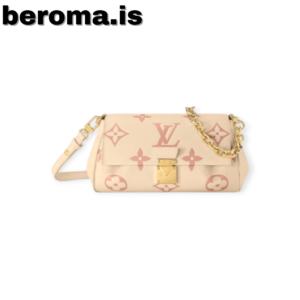Luxury is an aspirational world. It’s plush, exclusive, and, according to some, unattainable. Enter the ‘super fake’ market, which is turning this notion upside down. Louis Vuitton, a luxury brand synonymous with status and success, is no stranger to counterfeits. In fact, it’s the perfect battlefront to understand why super fakes are more than knock-offs; they’re becoming a cultural phenomenon.
The Rise of Super Fake LV Bags
Louis Vuitton has been a pioneering force in luxury since 1854. But with great success comes great imitation. The evolution of counterfeiting—particularly the emergence of ‘super fakes’—has mirrored the advancements within the brand itself. From monogram deterioration to stitching precision, super fakes are replicating every detail of the LV brand, challenging the myth that ‘quality is exclusive.’
But who crafts these imitations? The luxury counterfeit industry is an intricate web of skilled artisans and organized crime. Factories equipped with advanced technology produce counterfeit bags that are often difficult to distinguish from the originals. They find distribution through a shadowy global network, available to consumers online and offline, from New York City to the streets of Bangkok.
The Impact on Luxury and Consumer Behavior
The mere existence of super fake LV bags poses a significant threat to the luxury market. By producing high-quality replicas, counterfeiters diminish the value of the Louis Vuitton brand. The allure of owning a designer piece wanes when its exclusivity is compromised.
On the consumer end, the ubiquity of these knock-offs requires a discerning eye and genuine knowledge to separate the real from the fake. For luxury enthusiasts, navigating the authentic market has never been more challenging. The demand for super fakes is a testament to a twofold phenomenon: the aspiration toward luxury and the lack of accessibility to genuine articles.
Spotting a Super Fake LV Bag
Spotting a super fake is a game of details. It’s about meticulously examining every inch of the bag—inside and out. The monogram alignment, the studs that hold the handles, the fonts used for date codes—these are just a few of the tells that can reveal a counterfeit. We’ll go into these details and provide a checklist for luxury shoppers to authenticate their potential purchases.
Authenticity Guides and Resources
Louis Vuitton, like many luxury brands, offers guides to help customers judge authenticity. These resources often provide details specific to different bag models, including the material feel, the hardware sound, and the serial numbers’ placement.
Ethical and Legal Implications of the Super Fake Culture
The allure of a bargain and the satisfaction of owning a stylish handbag may cloud the serious ethical considerations. Counterfeiting disrupts the luxury market’s integrity and may have ties to activities like human trafficking and child labor. Beyond the ethical concerns, purchasing or selling super fake LV bags is illegal and can have severe legal repercussions.
Ethical Buying: Supporting Authenticity
Choosing to invest in genuine luxury items not only ensures quality and exclusivity but also supports the ethical treatment of workers and the brand’s associated ethical policies. Louis Vuitton actively combats counterfeits, protecting labor standards and intellectual property.
Understanding the Law
The legal landscape around counterfeit luxury goods is complex. Both buyers and sellers of fake LVs can face legal action. Understanding the risks involved in dealing with counterfeit items is crucial for anyone involved in the luxury market, from consumers to resellers.
Consumer Responsibility
In the end, consumers drive the market. By choosing to purchase or not purchase super fake LV bags, individuals exercise more power than they might realize. Money spent is a vote cast, and it’s important for consumers to be informed and aligned with their values when making purchases.
Strengthening the Fight Against Super Fakes
Louis Vuitton, like many luxury brands, has taken a range of actions to combat counterfeits. These include technological innovations such as the Louis Vuitton Prochasing an atherface Bag Hijram that uses blockchain technology, as well as collaborating with law enforcement agencies to break up counterfeit networks.
How Consumers Can Help
There are ways consumers can join the fight against counterfeiting. Supporting luxury brands’ anti-counterfeiting efforts, educating friends and family, and reporting suspected counterfeit sales can all contribute to the reduction of super fakes in the market.
The Road Ahead
The battle against super fake LV bags is ongoing and multifaceted. It requires a commitment to authenticity, a dedication to education, and a vigilant consumer base. The rising tide of super fakes can be stemmed, but only with a concerted effort from all stakeholders, from brands and governments to shoppers and communities.
In conclusion, super fake LV bags aren’t just replicas; they embody complex issues of luxury, accessibility, ethics, and legality. By understanding the landscape of the counterfeit market, luxury enthusiasts can deepen their appreciation for the brands they admire and make more informed, responsible purchasing decisions.